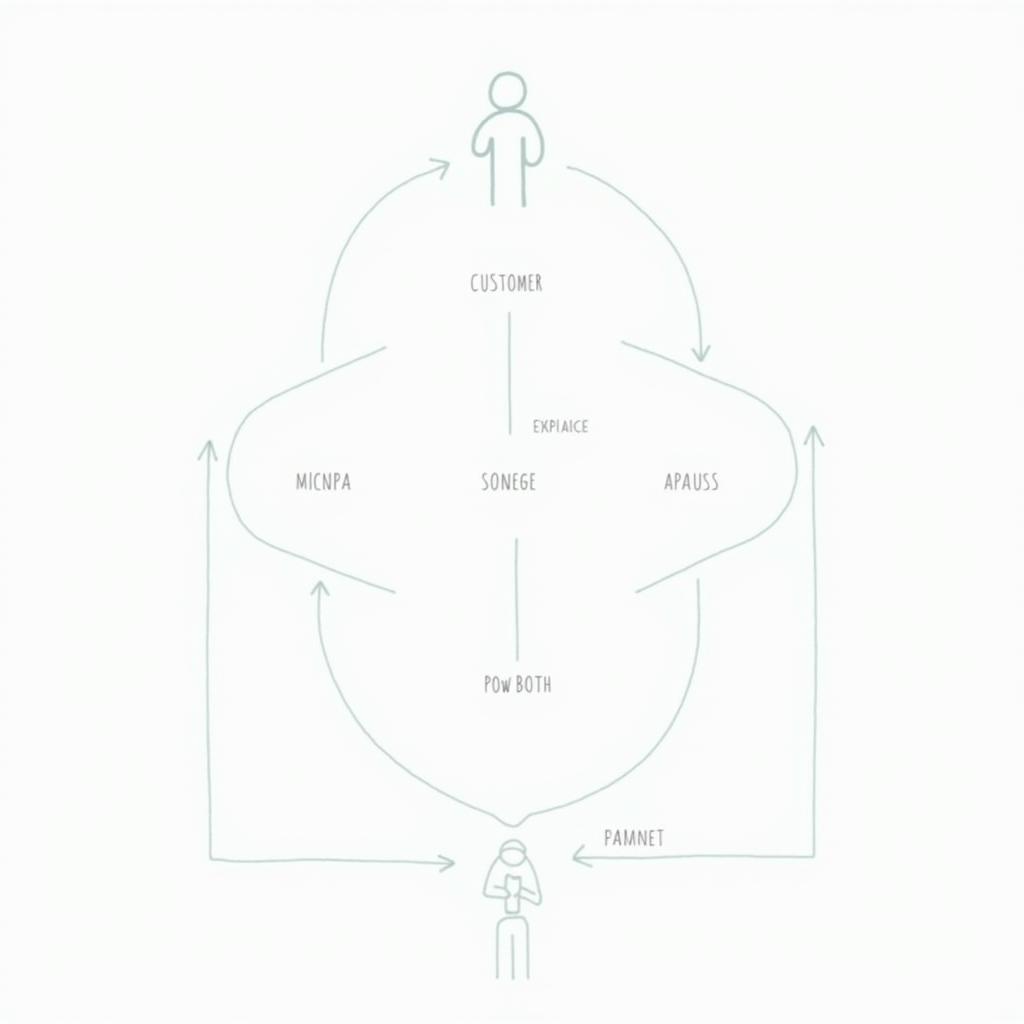Car service management can be complex, involving multiple steps and interactions. A sequence diagram provides a clear, visual representation of these processes, making it easier to understand, optimize, and manage car service operations. This article explores the power of sequence diagrams in car service management, offering practical examples and insightful analysis.
Understanding the flow of a typical car service process is crucial for both customers and service providers. A sequence diagram visually maps out the steps involved, clarifying the roles of each participant and the order of operations. This visual clarity can be invaluable for identifying bottlenecks, improving efficiency, and ensuring a smooth customer experience. What is a sequence diagram, and how does it apply to car service management? Let’s delve deeper.
What is a Sequence Diagram?
A sequence diagram is a type of interaction diagram that models the flow of logic within a system. It shows the order of messages exchanged between different objects or actors in a system over time. In the context of car service management, these actors could include the customer, the service advisor, the mechanic, the parts department, and the payment system.
Why Use a Sequence Diagram for Car Service Management?
Sequence diagrams offer several benefits for car service management:
- Visualizing the Process: They provide a clear, visual representation of the entire car service process, from appointment scheduling to vehicle pickup.
- Identifying Bottlenecks: By visualizing the flow of activities, sequence diagrams can help pinpoint bottlenecks or areas where delays commonly occur.
- Improving Communication: They facilitate better communication and understanding between different departments or stakeholders involved in the car service process.
- Training and Onboarding: Sequence diagrams serve as excellent training tools for new employees, illustrating the standard operating procedures.
- Streamlining Operations: They help optimize the car service process by identifying areas for improvement and automation.
How can you create a sequence diagram for your car service business? What are the key components to include?
Creating a Sequence Diagram for Car Service Management
Creating a sequence diagram involves identifying the key actors, the messages they exchange, and the order of those messages. Here’s a breakdown of the process:
- Identify Actors: Determine all the individuals or systems involved in the car service process (e.g., customer, receptionist, mechanic, payment system).
- Define the Lifeline: Draw a vertical line representing the lifeline of each actor.
- Represent Messages: Use arrows to represent messages exchanged between actors. The arrowhead indicates the direction of the message.
- Order the Messages: Arrange the messages chronologically from top to bottom, reflecting the order in which they occur.
- Add Details: Include relevant details such as message names, parameters, and return values.
Example Sequence Diagram for a Simple Car Service
Let’s consider a simplified car service scenario: a customer schedules an oil change. The actors are the customer, the receptionist, and the mechanic.
- The customer requests an appointment with the receptionist.
- The receptionist checks availability and schedules the appointment.
- The customer arrives for the appointment.
- The mechanic performs the oil change.
- The customer pays for the service.
This simplified example illustrates the basic flow of a car service interaction. More complex scenarios, such as diagnosing a mechanical problem, would involve more actors and messages.
Conclusion
Sequence diagrams provide a valuable tool for understanding, optimizing, and managing car service operations. By visually representing the flow of activities and interactions, they can help improve efficiency, communication, and customer satisfaction. Implementing sequence diagrams in your car service business can lead to a more streamlined and effective operation.
FAQs
- What are the key components of a sequence diagram? Actors, lifelines, messages, and the order of messages are the key components.
- How can sequence diagrams improve car service management? They help visualize the process, identify bottlenecks, improve communication, and streamline operations.
- What are some examples of actors in a car service sequence diagram? Examples include the customer, service advisor, mechanic, parts department, and payment system.
- How detailed should a sequence diagram be? The level of detail depends on the specific purpose of the diagram. It can range from a high-level overview to a detailed representation of specific interactions.
- What software can be used to create sequence diagrams? Several tools are available, including draw.io, Lucidchart, and StarUML.
- Can sequence diagrams be used for other types of businesses? Yes, sequence diagrams are a versatile modeling tool applicable to various business processes across different industries.
- How can I learn more about creating and using sequence diagrams? Numerous online resources, tutorials, and books provide in-depth information on sequence diagrams.
For further information regarding optimizing car service workflows, explore our article on car servicing in flow processing. This resource provides a deep dive into streamlining your operations.
Need assistance with your car service needs? Contact us via WhatsApp: +1(641)206-8880, or Email: [email protected]. Our 24/7 customer support team is ready to help.


